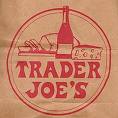China Confronts Mounting Piles of Unsold Goods
GUANGZHOU, China — After three decades of torrid growth, China is
encountering an unfamiliar problem with its newly struggling economy: a
huge buildup of unsold goods that is cluttering shop floors, clogging
car dealerships and filling factory warehouses.
The glut of everything from steel and household appliances to cars and
apartments is hampering China’s efforts to emerge from a sharp economic
slowdown. It has also produced a series of price wars and has led
manufacturers to redouble efforts to export what they cannot sell at
home.
The severity of China’s inventory overhang has been carefully masked by
the blocking or adjusting of economic data by the Chinese government —
all part of an effort to prop up confidence in the economy among
business managers and investors.
But the main nongovernment survey of manufacturers in China showed on
Thursday that inventories of finished goods rose much faster in August
than in any month since the survey began in April 2004. The previous
record for rising inventories, according to the HSBC/Markit survey, had
been set in June. May and July also showed increases.
“Across the manufacturing industries we look at, people were expecting
more sales over the summer, and it just didn’t happen,” said Anne
Stevenson-Yang, the research director for J Capital Research, an
economic analysis firm in Hong Kong. With inventories extremely high and
factories now cutting production, she added, “Things are kind of
crawling to a halt.”
Problems in China give some economists nightmares in which, in the worst
case, the United States and much of the world slip back into
recession
as the Chinese economy sputters, the European currency zone collapses
and political gridlock paralyzes the United States.
China is the world’s second-largest economy and has been the largest
engine of economic growth since the global financial crisis began in
2008. Economic weakness means that China is likely to buy fewer goods
and services from abroad when the
sovereign debt crisis in Europe
is already hurting demand, raising the prospect of a global glut of
goods and falling prices and weak production around the world.
Corporate hiring has slowed, and jobs are becoming less plentiful.
Chinese exports, a mainstay of the economy for the last three decades,
have almost stopped growing. Imports have also stalled, particularly for
raw materials like iron ore for steel making, as industrialists have
lost confidence that they will be able to sell if they keep factories
running. Real estate prices have slid, although there have been hints
that they might have bottomed out in July, and money has been leaving
the country through legal and illegal channels.
Interviews with business owners and managers across a wide range of
Chinese industries presented a picture of mounting stockpiles of unsold
goods.
Business owners who manufacture or distribute products as varied as
dehumidifiers, plastic tubing for ventilation systems, solar panels,
bedsheets and steel beams for false ceilings said that sales had fallen
over the last year and showed little sign of recovering.
“Sales are down 50 percent from last year, and inventory is piled high,”
said To Liangjian, the owner of a wholesale company distributing
picture frames and cups, as he paused while playing online poker in his
deserted storefront here in southeastern China.
Wu Weiqing, the manager of a faucet and sink wholesaler, said that his
sales dropped 30 percent in the last year and he has piled up extra
merchandise. Yet the factory supplying him is still cranking out shiny
kitchen fixtures at a fast pace.
“My supplier’s inventory is huge because he cannot cut production — he
doesn’t want to miss out on sales when the demand comes back,” he said.
Part of the issue is that the Chinese government’s leaders have decided
to put quality-of-life concerns ahead of maximizing economic growth when
it comes to two of the country’s largest industries: housing and autos.
Premier Wen Jiabao has imposed a strict ban on purchases of second and
subsequent homes, in the hope that discouraging real estate speculation
will improve the affordability of homes. The ban has resulted in a steep
decline in residential real estate prices, a sharp fall in housing
construction and widespread job losses among construction workers.
At the same time, the municipal government in Guangzhou, one of China’s
largest cities, has sharply reduced this summer the number of new car
registrations it allows so as to reduce traffic congestion and air
pollution.
Municipal officials from all over China have been flocking to Guangzhou
to ask for details. Xi’an, the metropolis of northwestern China, has
already announced this month that it will limit car registrations,
although it has not settled on the details.
The Chinese auto industry has grown tenfold in the last decade to become
the world’s largest, looking like a formidable challenger to Detroit.
But now, the Chinese industry is starting to look more like Detroit in
its dark days in the 1980s.
Inventories of unsold cars are soaring at dealerships across the nation,
and the Chinese industry’s problems show every sign of growing worse,
not better. So many auto factories have opened in China in the last two
years that the industry is operating at only about 65 percent of
capacity — far below the 80 percent usually needed for profitability.
Yet so many new factories are being built that, according to the Chinese
government’s National Development and Reform Commission, the country’s
auto manufacturing capacity is on track to increase again in the next
three years by an amount equal to all the auto factories in Japan, or
nearly all the auto factories in the United States.
“I worry that we’re going down the same road the U.S. went down, and it
takes quite some time to fix that,” said Geoff Broderick, the general
manager of Asian operations at J. D. Power & Associates, the global
consulting firm.
Automakers in China have reported that the number of cars they sold at
wholesale to dealers rose by nearly 600,000 units, or 9 percent, in the
first half of this year compared to the same period last year.
Yet dealerships’ inventories of new cars rose 900,000 units, to 2.2
million, from the end of December to the end of June. While part of the
increase is seasonal, auto analysts say that the data shows that retail
sales are flat at best and most likely declining — a sharp reversal for
an industry accustomed to double-digit annual growth.
“Inventory levels for us now are very, very high,” said Huang Yi, the
chairman of Zhongsheng Group, China’s fifth-largest dealership chain.
“If I hadn’t done special offers in the first half of this year, my
inventory would be even higher.”
Manufacturers have largely refused to cut production, and are putting
heavy pressure on dealers to accept delivery of cars under their
franchise agreements even though many dealers are struggling to find
places to park them or ways to finance their swelling inventories. This
prompted the government-controlled China Automobile Dealers Association
to issue a rare appeal to automakers earlier this month.
“We call on manufacturers to be highly concerned about dealer
inventories, and to take timely and effective measures to actively
digest inventory, especially taking into account the financial strain on
distributors, as manufacturers have to provide the necessary financing
support to help dealers ride out the storm,” the association said.
Officially, though, most of the inventory problems are a nonissue for the government.
The Public Security Bureau, for example, has halted the release of data
about slumping car registrations. Data on the steel sector has been
repeatedly revised this year after a new method showed a steeper
downturn than the government had acknowledged. And while rows of empty
apartment buildings line highways outside major cities all over China,
the government has not released information about the number of empty
apartments since 2008.
Yet businesspeople in a wide range of industries have little doubt that the Chinese economy is in trouble.
“Inventory used to flow in and out,” said Mr. Wu, the faucet and sink
sales manager. “Now, it just sits there, and there’s more of it.”
Hilda Wang contributed reporting.

![[SB10000872396390444327204577615671256091972]](http://s.wsj.net/public/resources/images/OB-UH839_0826or_D_20120826152427.jpg)








